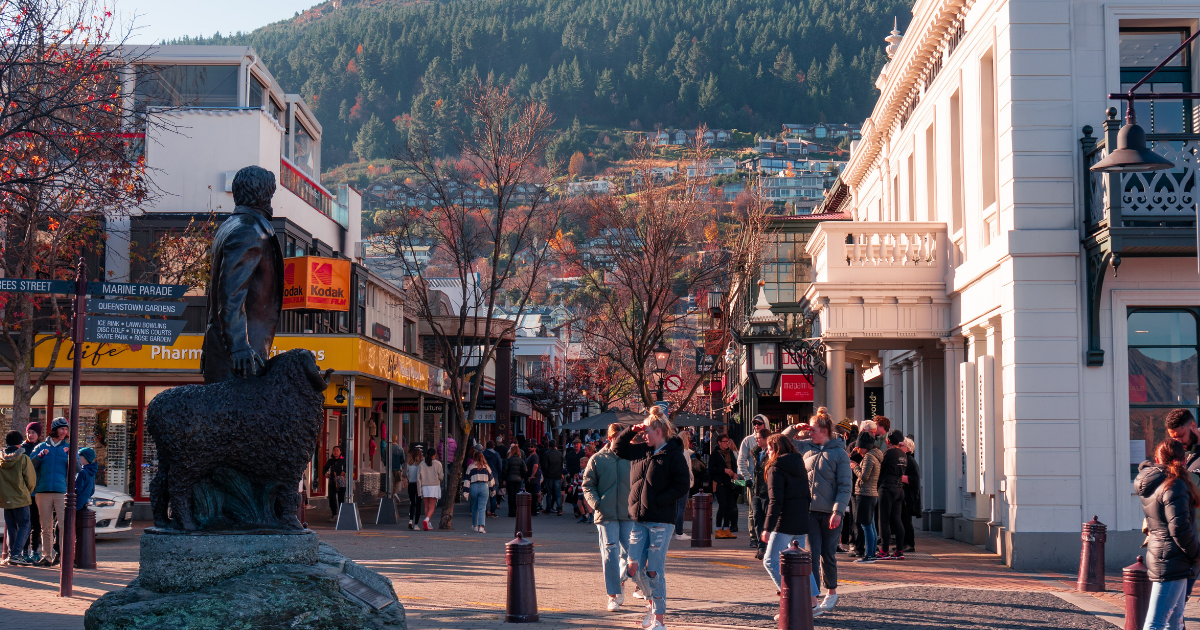Thursday, 01 July 2021
Queenstown Lakes welcomes our new communities
QLDC today joins an initiative to welcome new residents settling in the district.

Haere mai, bem-vindo, bienvenido, maligayang pagdating, welcome!
Queenstown Lakes District Council (QLDC) today joins an initiative to welcome new residents settling in the district.
The Council has been selected by Immigration New Zealand, the Human Rights Commission, and the Office of Ethnic Communities to participate in Welcoming Communities Te Waharoa ki ngā Hapori, a project to support newcomers to feel welcomed and able to participate in the economic, civic, cultural and social life of their new community.
The initiative will be rolled out over three years and builds on a pilot programme by Immigration New Zealand across five regions in New Zealand from 2017 to 2019.
This month it will be extended out to three more councils, including QLDC.
The Welcoming Communities project aims to make the district more welcoming for everyone by focusing on a range of areas, including supporting new residents with economic development, business and employment, civic engagement and participation, creating welcoming public spaces, equitable access, and welcoming communications.
QLDC’s Senior Community Liaison and Policy Advisor Marie Day said the programme will support all newcomers to the district, including Kiwis.
“Many people living in Queenstown Lakes are from somewhere else in New Zealand or the world and have chosen to make this special place their home. Newcomers and their whānau are a valued and distinct part of our district. We want to help everyone, not only settle here, but to really thrive and feel embedded in our wider community.”
“As part of the programme, we will complete an initial community stocktake, which will include topics such as how council services can better meet the needs of all our communities, and how we can improve community connections. It will be a joint initiative, working with our communities to develop a Welcome Plan that reflects the unique characteristics of our place.”
Ms Day said that socially connected communities where everyone feels welcome enjoy better social outcomes, and stronger economic growth.
Mayor Jim Boult said that the difficulties faced across the district as a result of the COVID-19 pandemic had brought to the fore the high regard in which migrants are held.
“Their enormous contribution to our economy, cultural diversity, and identity has been highlighted for the country to see in recent times. We are a place that proudly welcomes diversity and the vibrancy it adds to our lives. We want to continue our evolution as a place that actively supports those who choose to share our beautiful home.”
Ms Day said newcomers are central to the district’s visitor economy, whether coming from other parts of New Zealand or overseas. Ensuring everyone feels included and has a sense of belonging is vital for building a strong, resilient and vibrant community. The happiness and commitment of newcomers as part of the Queenstown Lakes community is also central to the experience visitors receive and the subsequent reputation of the district.
QLDC will consult and partner with mana whenua Kāi Tahu and local Māori in development of the Welcome Plan, working together to create, advocate for, and continue to foster a welcoming and inclusive community.
Welcoming Communities Te Waharoa ki ngā Hapori is a government funded initiative led by Immigration New Zealand in partnership with the Office of Ethnic Communities and the Human Rights Commission.
ENDS|KUA MUTU.
Media contact: communications@qldc.govt.nz or call 03 441 1802.
FURTHER INFORMATION | Kā pāroko tāpiri:
Of the 641 students currently attending Queenstown Primary School, 166 are categorised as Asian, Middle Eastern, Latin American and African, which includes a wide range of nationalities.
During the COVID-19 Queenstown Lakes welfare response, more than 7,377 unique requests for welfare were received. Of those, 76% were made by those on employment visas, including the following nationalities (grouped for the benefit of reporting; ordered from highest number to lowest):
- United Kingdom and Ireland
- South America
- Southeast Asia
- Mainland Europe
- India
- America and Canada
- China
- Korea
- Japan
- Nepal
- Scandinavian countries
- Australia
- Pacific Islands
- Sri Lanka
- South Africa
- Russia





